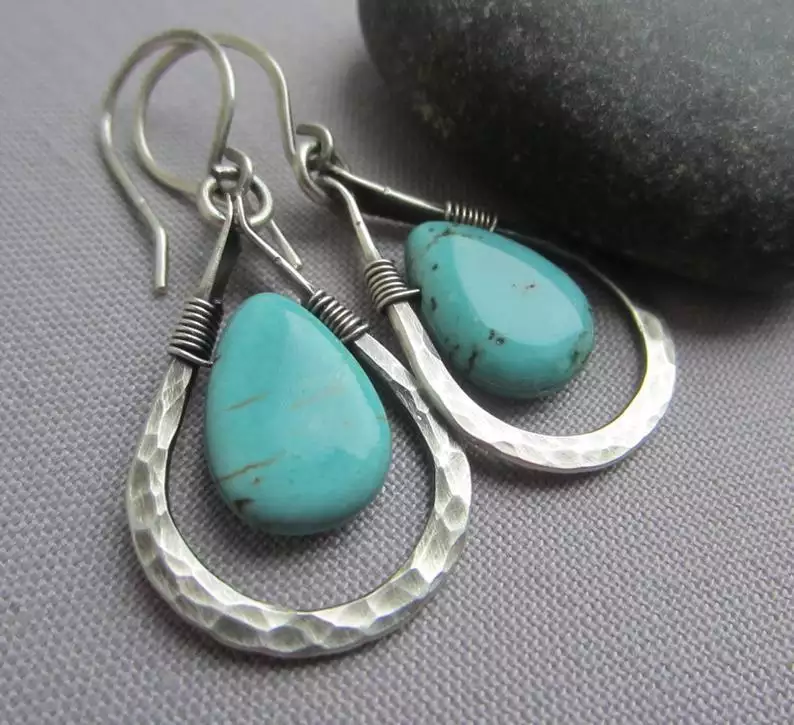
Turquoise is a semi-precious stone with a long history of being used in jewelry in many different cultures. Its characteristic blue-green color is unmistakable, making it highly sought after in the jewelry market. But what is the history behind this popular turquoise stone?

Origin
The stone has been in use as far back as 4000 BC when it was first used in Egypt for jewelry and ornaments. It became a popular stone for jewelry throughout the region and then spread to the rest of the world over the course of many centuries. The color was believed to be imbued with special healing powers, and the stone was often given to new mothers to protect the baby.
Turquoise was also popular among the Native American tribes of the southwest, such as the Navajo and Hopi. They believed that the stone brought good luck and protection, and used it in many ceremonies. They also used it for trade, and it was highly valued by many tribes.

Turquoise in America
In the 1800s, large deposits of turquoise were discovered in the southwestern United States, and this made it much more accessible to the jewelry market. Many jewelry makers began to incorporate the stone into their designs, and it quickly became a popular choice.
Today, turquoise stones are still highly sought after and are used in a wide variety of jewelry designs. It is also popular among collectors, as the stone often has unique markings and fluctuations in color.

So why is turquoise stone such a popular choice in jewelry? It is easily accessible, and its stunning blue-green color makes it stand out in any piece. The stone has a long history, and its symbolism and associations with luck and protection make it a desirable choice. The unique markings of the stone make it a one-of-a-kind choice for any piece of jewelry.
